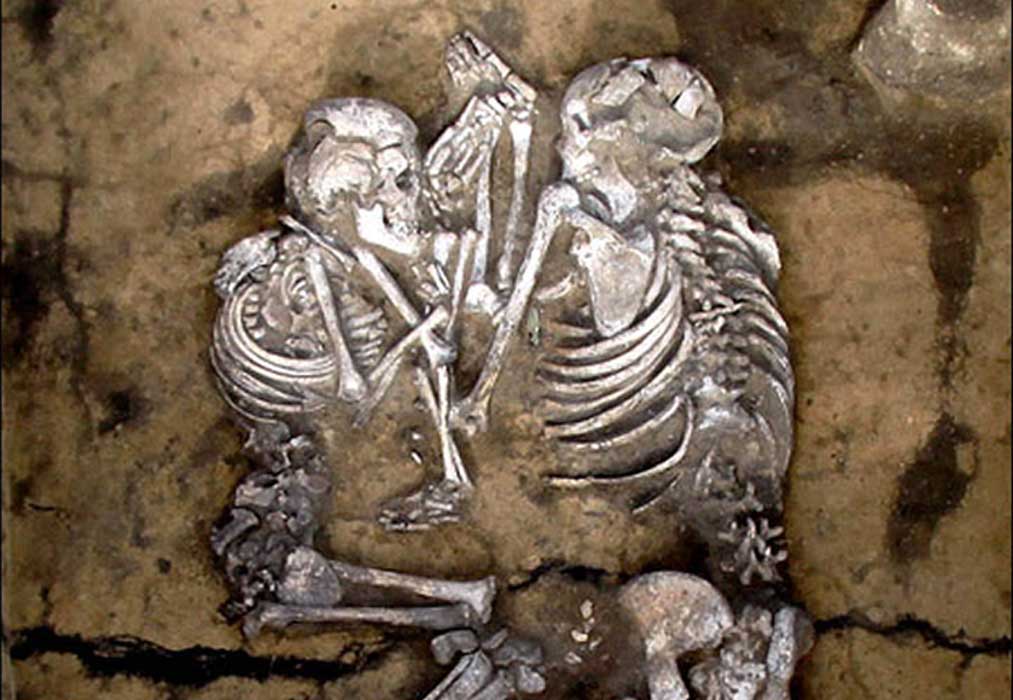Skeletons in Love: What is Behind the Loving Embrace in the Andronovo Burials?
There is something unique about the Bronze Age tombs in the Novosibirsk region of Siberia. The Andronovo burials, as they have been called, include dozens of skeletal remains of couples clutching each other in a loving embrace.
About 600 tombs were found near the village of Staryi Tartas. They are said to date to between the 17th and 14th centuries BC. The graves including couples show them facing each other and some were carefully buried with their hands clasped together or in other touching positions. Grave goods in their burials included bronze decorations, ceramics, weapons, and personal belongings such as gaming pieces and a mold for casting earrings and pendants.
Reflecting on the find, archaeologist Vasiliy Labetskiy said,
“The best fairy tales have always ended 'They lived happily ever after and died on the same day’. It is quite astonishing how the fairy tales become life, as the bronze burials tell us a story how some people were not divided even by death.”

Two adults and two sub-adults in a group. (Siberian Times and Vyacheslav Molodin, Institute of Archeology and Ethnography of the Siberian Branch of the Russian Academy of Sciences)
Through analysis of the human remains and graves, archaeologists decided the individuals buried there were part of the Andronovo culture – a non-native Siberian group which had a more Caucasian appearance than the native population.
Some believe the curious positions of the ancient couples may reflect the importance of relationships and family values in their culture. However, this doesn’t explain how or why the individuals were buried at the same time.
Which leads to a more macabre suggestion - shattering the fairy tale image of loving couples spending their whole lives together – human sacrifice. Professor Lev Klein of St Petersburg State University has suggested the burials can be associated with reincarnation beliefs and likened to deeksha rituals in the ancient Indian sub-continent. Klein said, “Behind Andronov [sic] burials lay extraordinary stories about travels and discoveries, about human destinies and the destinies of whole civilisations.”
'Deeksha' means ‘consecration for a religious ceremony’ and suggests a man donates his body as a sacrifice to all the gods through the ritual sexual act of conceiving. Klein proposes the relatives of the deceased man may have reinterpreted this ritual by sacrificing his wife or another woman so sexual intercourse could be simulated posthumously with the bodies placed in positions of intimacy.

An Andronovo couple with clasped hands. (Bizzarro Bazar/CC BY NC 3.0)
Klein’s theory has been debated and the mystery continues. But regardless of the cause for the burials of the ‘skeletons in love’, Labetskiy sees “a certain beauty in this unfinished story”.
Top Image: Adult couple in embrace from Siberia. Source: Siberian Times and Vyacheslav Molodin, Institute of Archeology and Ethnography of the Siberian Branch of the Russian Academy of Sciences

















